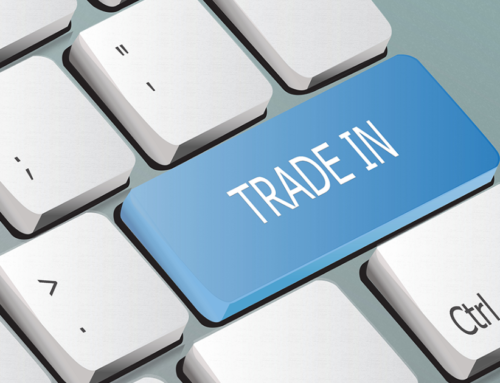On 23rd September 2022, the General Office of China’s State Council released the Opinions of the General Office of the State Council on Deepening the Reform of the Management System for the Electrical and Electronics Industry (hereinafter referred to as the Reform). The Reform reflects the authorities’ intention to further streamline the management system for the electrical and electronics industry, with the aim to create a better business environment for relevant actors.
The Reform mainly consists of five major actions: (i) Optimising the market access management system for electronic and electrical products; (ii) Streamlining the evaluation and certification system for green products; (iii) Supporting the high-quality development of basic electronics industries; (iv) Optimising the circulation management system; (v) Strengthening regulation throughout the whole supply chain.
The following is a summary of the major adjustments outlined in the Reform that will influence manufactures and importers, especially in terms of compulsory certification and supervision.
- Adjusting CCC catalogue. A total of nine electrical and electronic products have been removed from the CCC C For more details, please refer to the Notice on Canceling the Compulsory Certification for Certain Electrical and Electronic Products. However, there will be two new products that will be added to the CCC Catalogue: (i) lithium ion cells and batteries, and mobile power supplies used in electronic and electrical products; and (ii) power adapters/chargers for telecommunication terminal products. Within these two categories, currently there are a few national standards for specific types of products, e.g., GB 31241-2014 Lithium ion cells and batteries used in portable electronic equipment; GB 40165-2021 Lithium ion cells and batteries used in stationary electronic equipment; GB/T 32638-2016 Technical requirements and test methods for power adapters and charging/data port of mobile telecommunication terminal equipment. However, there still lack specific standards illustrating clearly the CCC certification process of those two products.
- Reforming the CTA certification and trial approval. The China Network Access License (NAL) Certification for Telecommunications Equipment, commonly known as CTA certification, is a mandatory network access requirement that must be followed by those telecommunication products listed in the telecommunication product catalogue, which released and updated by MIIT. For products that are not listed in the catalogue, or lacking support from national or sector standards, suppliers may apply for trial approval, which is equally recognised. The Reform makes adjustments in terms of timeline for approval – shortened to 15 workdays – and validity of the trial approval – extended from 1 to 2 years. In addition, according to the Reform, the network license number is no longer required to be marked on the product’s package, built-in information and advertisement: this will allow enterprises to arrange certification, prepare the printing of packaging and instructions at the same time, thus avoiding unnecessary delays for in-order arrangements. Furthermore, the test for CTA certification and testing for mandatory electromagnetic compatibility (EMC) certification for telecommunications equipment, will be mutually recognised by the licensing bodies: enterprises will only need to carry out one single test while applying for both CTA and EMC certification. The above measures will significantly improve the efficiency and shortens the time for preparation.
- Optimising the SRRC Certification. Based on MIIT’s regulations and requirements, all radio components sold and used in China must obtain the radio type approval certification. The Reform will shorten the approval time for SRRC certification, and extend the validity of the license that are less than two years to more than two years. More importantly, enterprises will be allowed to generate the SRRC approval code by themselves, as long as it is done in accordance with the coding rules formulated by MIIT. Though the products are not allowed for sales or uses before the code is being official approved, this will allow relevant enterprises to begin immediately relevant packaging activities with codes attached while waiting for the approval.
- Promoting self-inspection and self-certification. According to the Reform, “by the end of 2022, a number of enterprises producing telecommunication equipment, radio transmission equipment, information technology equipment and household appliances with solid foundations, quality management and credit, will be identified to carry out self-inspection and self-certification trials”.These will be allowed to replace third-party certification report for CTA, CCC and SRRC with their own reports. The trial result will decide further actions of authorities. Though the Reform limits the commitment to trials only, it is still regarded as a significant step forward for exploring a new compulsory certification mechanism: if self-inspection and certification become possible, the costs for enterprises will be significantly reduced as they will not need to engage third-party bodies to carry out product and factory inspection. Yet, to ensure the product quality, the regulation needs to be adapted to the new model as well, which in practice will translate into more stringent monitoring and supervision from authorities for self-inspected products.
- Improving the regulatory supervision mechanism. According to the Reform, the credit-based supervision system will be further improved. Specifically, the risk levels for electronic and electrical enterprises will be divided into different classes, and the proportion and frequency for spot checks will be linked with enterprises’ credits and risk levels.
In short, through a series of measures and actions, China intends to alleviate the burdens of the enterprises. Such intention, by contrast, may result into heavier burdens for regulatory authorities to ensure compliance of the product. It is reflected in the Reform that the regulatory mechanism is adjusted accordingly. In addition, it is expected that that more supporting measures and standards will be formulated and released. Especially when the self-inspection and declaration is promoted, all relevant regulations must be poised to provide support.




